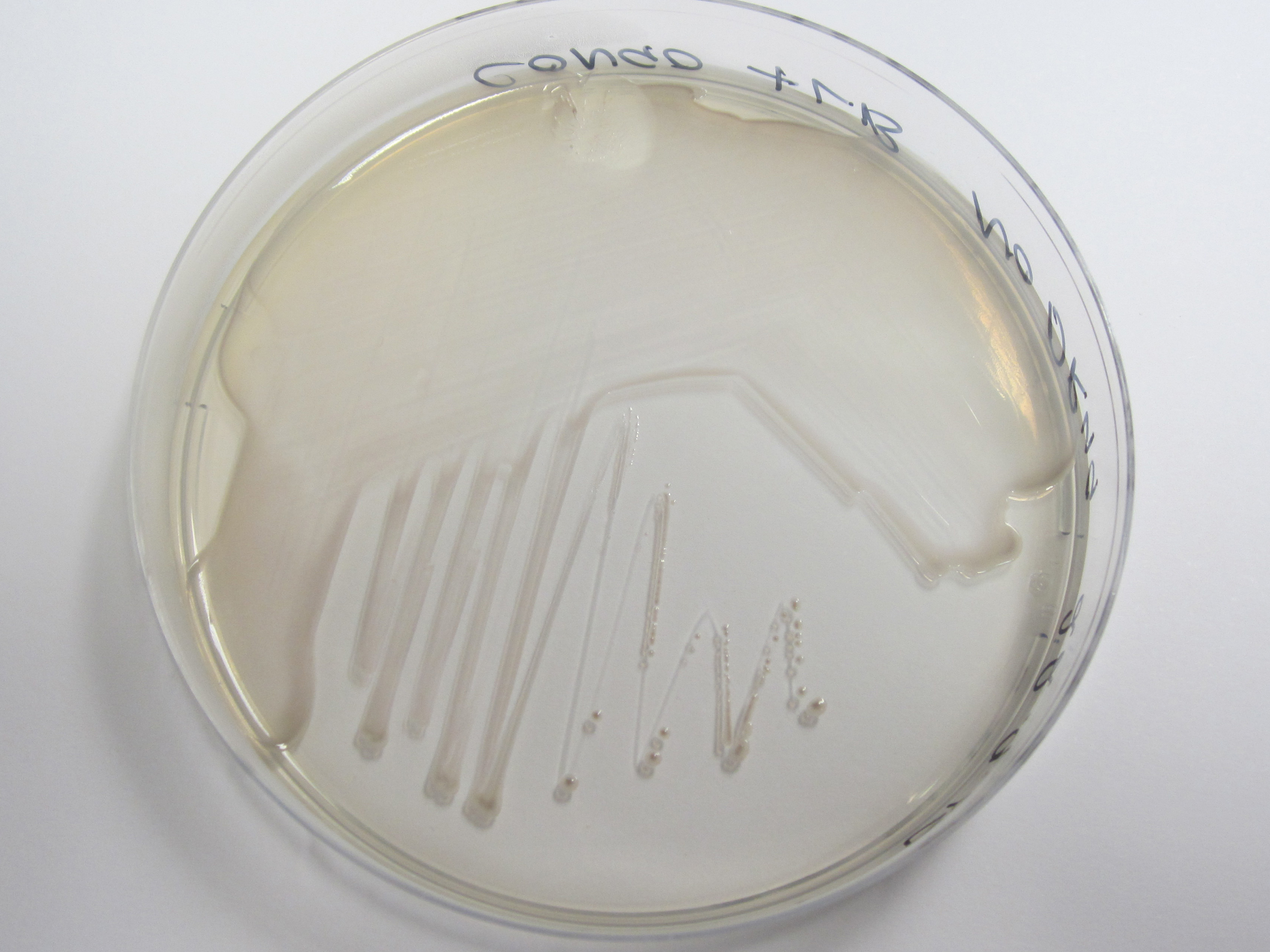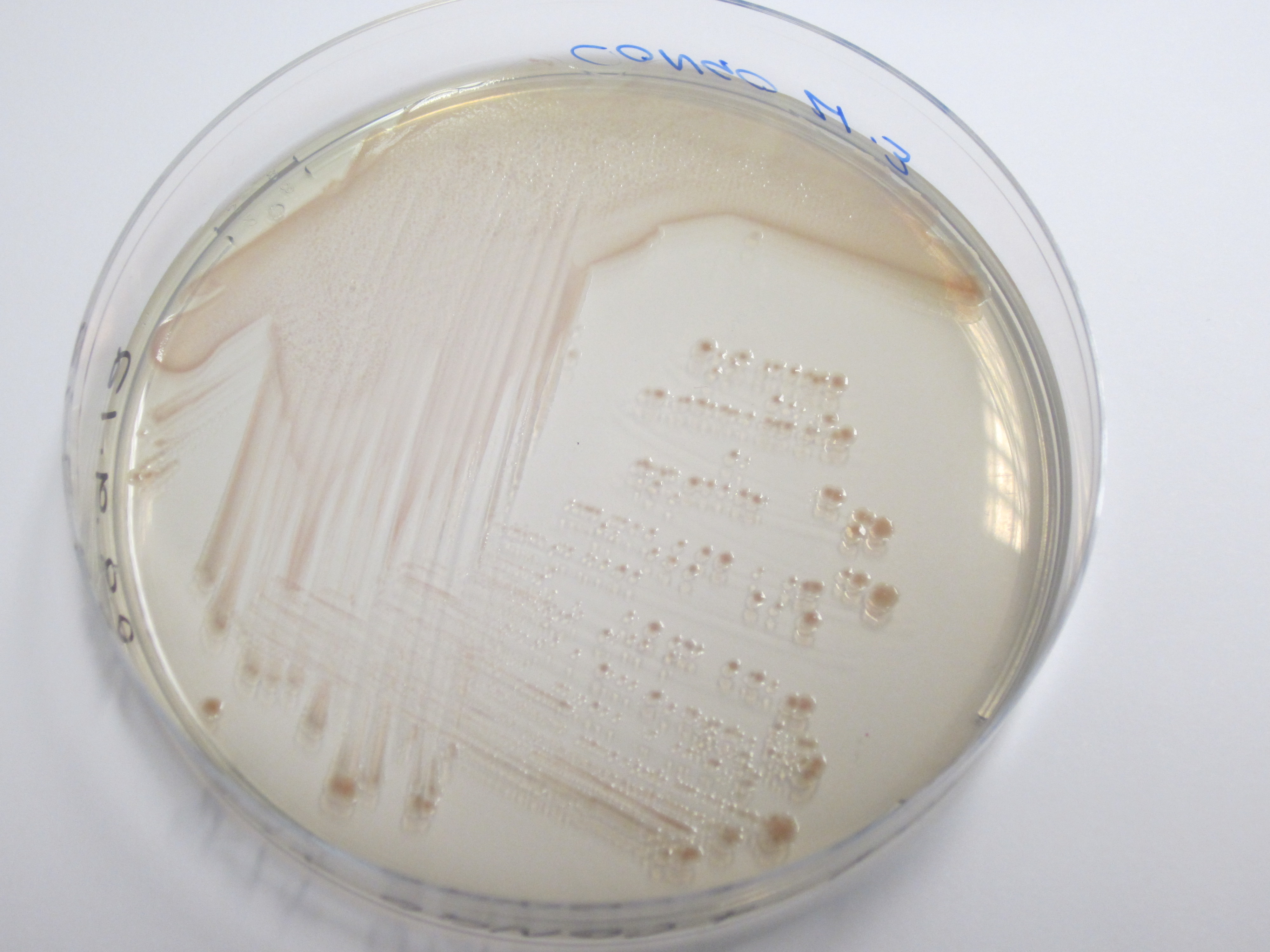Team:University College London/Module 2/Results
From 2012.igem.org
(Difference between revisions)
Sednanalien (Talk | contribs) (→Congo Red Agar Assay) |
Sednanalien (Talk | contribs) (→Congo Red Agar Assay) |
||
| Line 6: | Line 6: | ||
== Congo Red Agar Assay == | == Congo Red Agar Assay == | ||
| - | We have used a congo red agar assay to determine if our curli BioBrick transformed cells have successfully expressed the amyloid fibrins. Congo red is a diazo dye that binds to the curli fibrins, thereby causing a | + | We have used a congo red agar assay to determine if our curli BioBrick transformed cells have successfully expressed the amyloid fibrins. Congo red is a diazo dye that binds to the curli fibrins, thereby causing cells positive for curlis to appear red when grown on this agar. |
| + | |||
| + | As can be seen from plates below, our cells transformed with BBa_K729017 display a red tinge to their colonies, while the untransformed W3110 cells do not. We hence conclude that we have successfully transformed our cells to produce curlis. | ||
{| class="wikitable" | {| class="wikitable" | ||
Revision as of 14:18, 26 September 2012
Module 2: Aggregation
Description | Design | Construction | Characterisation | Shear Device | Modelling | Results | Conclusions
Congo Red Agar Assay
We have used a congo red agar assay to determine if our curli BioBrick transformed cells have successfully expressed the amyloid fibrins. Congo red is a diazo dye that binds to the curli fibrins, thereby causing cells positive for curlis to appear red when grown on this agar.
As can be seen from plates below, our cells transformed with BBa_K729017 display a red tinge to their colonies, while the untransformed W3110 cells do not. We hence conclude that we have successfully transformed our cells to produce curlis.
| Control | BBa_K729017 |
|---|---|
 | 
|
 "
"